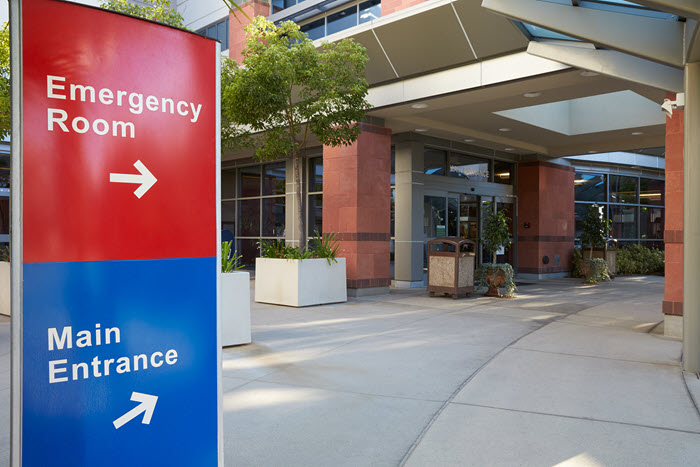
What is the Medicare Levy Surcharge?
The Medicare Levy Surcharge is a charge some medium and high income earners pay in addition to the Medicare Levy.
Like the Medicare Levy, the surcharge is to help pay for the public health system and to encourage those people who can afford it to take out private health cover. This means they can avoid paying the surcharge, but also if they do get sick, those taxpayers go to a private hospital and reduce the pressure on public medical services.
Who Pays The Medicare Levy Surcharge?
The short answer, not everyone.
The Medicare Levy Surcharge is designed to encourage more Australians to take out private hospital insurance.
By doing this, the private health insurers, not the public health system, pay for the costs of medical care if the need arises.
But, private health insurance can be expensive, so the government only applies the surcharge if you meet the following criteria:
- You are single and earn over $97,000 a year, or a family who earn a combined income above $194,000, AND
- You do not have private hostpital cover
If your income is below these amounts or you have private hospital cover, the surcharge does not apply.
How is the Medicare Levy Surcharge (MLS) Calculated?
The surcharge is calculated as a simple percentage of your annual income. In general, the more you earn the higher the Medicare Levy Surcharge.
Medicare Levy Surcharge income tiers for 2024–25 financial year are:
| Threshold | Income | Income | Income | Income |
| Single | Up to $97,000 | $97,001 – $113,000 | $113,001 – $151,000 | $151,001 or more |
| Family | Up to $194,000 | $194,001 – $226,000 | $226,001 – $302,000 | $302,001 or more |
| Medicare levy surcharge | 0% | 1% | 1.25% | 1.5% |
The income tiers for individuals for 2023–24 financial year are:
- $93,000 – $108,000 – the surcharge is 1% of your income
- $108,001 – $144,000 – the surcharge is 1.25% of your income
- $144,001 and above – the surcharge is 1.5% of your income
Prior Years: Individuals: 2014–15 to 2022–23
- $90,001 – $105,000 – the surcharge is 1% of your income
- $105,001 – $140,000 – the surcharge is 1.25% of your income
- $140,001 and above – the surcharge is 1.5% of your income
The income tiers for families for 2023–24 financial year are:
- $186,000 – $216,000 – the surcharge is 1% of your combined income
- $216,001 – $288,000 – the surcharge is 1.25% of your combined income
- $288,001 and above – the surcharge is 1.5% of your combined income
Prior years: Families 2014–15 to 2022–23
- $180,000 – $210,000 – the surcharge is 1% of your combined income
- $210,001 – $280,000 – the surcharge is 1.25% of your combined income
- $280,001 and above – the surcharge is 1.5% of your combined income
How to avoid the Medicare Levy Surcharge?
If you earn above $97,000 as an individual or above $194,000 as a couple or family, there is a simple way to avoid the surcharge.
Take out private hospital cover. It’s that simple.
You enter you private hospital cover details on your tax return, and then the ATO will not apply the Medicare Levy Surcharge to you.
Important Note: You must have private hospital cover to avoid the surcharge. If you have just an extras policy, the surcharge will still apply once you earn over the income thresholds.
Should you take out private health cover?
Deciding if private health cover is the best decision for you can be complicated. Read more here about deciding on private health cover.
For individuals, private hospital cover costs on average between $80 and $190 a month, depending on the tier (level). For couples and families, a general rule of thumb is that cover is between 2x and 2.5x more than it is for individuals.
Roughly, Private Health Insurance for individuals costs can start from as little at $800 per year for basic hospital cover. If you earn $100,000, your surcharge works out to $1,000.
So, it is possible to wind up ahead by paying for health cover and escaping the Medicare Levy Surcharge. A little bonus is these policies often include ‘extras’ like dental or physio each year, which can help to reduce your bill for those services too.
Important note: The above example is general in nature and should not be taken as detailed advice. We recommend speaking with a financial planner who can assess your full circumstances and help you decide if private hospital cover is right for you.
Simple Summary
Almost everyone who works in Australia pays the Medicare Levy at 2% of their income (if they earn more than $32,501). Only people who earn over $97,000 (singles) or $194,000 (couples) also pay the Medicare Levy Surcharge IF they don’t have private health cover.




